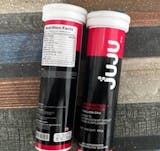Creating a meal plan for weight loss can be a great way to achieve your goals while still enjoying delicious food. A well-structured plan not only helps you lose weight but also ensures you get the nutrients your body needs. In this article, we will explore how to make a sustainable meal plan that fits your lifestyle and dietary preferences.
Understanding the Basics of a Meal Plan for Weight Loss
Creating a meal plan for weight loss is essential for achieving your goals. A successful plan focuses on a calorie deficit while ensuring you get the nutrients your body needs. Here are some key points to consider:
Importance of Calorie Deficit
- A calorie deficit means you consume fewer calories than you burn.
- This is crucial for weight loss, as it forces your body to use stored fat for energy.
- Aim for a moderate deficit to ensure sustainable weight loss without feeling deprived.
Nutrient-Dense Foods
- Choose foods that are high in nutrients but low in calories. Examples include:
- Vegetables (like spinach and broccoli)
- Fruits (such as berries and apples)
- Whole grains (like quinoa and brown rice)
- These foods help you feel full and satisfied while keeping your calorie intake in check.
Balancing Macronutrients
- A balanced meal plan includes:
- Proteins: Essential for muscle repair and growth (e.g., chicken, beans).
- Carbohydrates: Your body's main energy source (e.g., whole grains, fruits).
- Fats: Important for hormone production and nutrient absorption (e.g., avocados, nuts).
- Aim for a mix of these macronutrients in each meal to maintain energy levels and support overall health.
Remember, a good meal plan is not just about cutting calories; it’s about making smart food choices that nourish your body and support your weight loss journey.
Building a Sustainable Meal Plan for Weight Loss
Creating a meal plan that helps you lose weight while being easy to stick to is essential. Choosing whole foods over processed foods is a key step in this process. Here are some important points to consider:
Choosing Whole Foods Over Processed Foods
- Whole foods are generally more nutritious and filling.
- Processed foods often contain added sugars and unhealthy fats.
- Focus on fresh fruits, vegetables, whole grains, and lean proteins.
Incorporating Protein and Fiber
- Protein helps you feel full longer. Good sources include chicken, fish, beans, and tofu.
- Fiber-rich foods like fruits, vegetables, and whole grains also promote fullness.
- Aim to include a source of protein and fiber in every meal and snack.
Healthy Fats and Their Role
- Healthy fats, such as those from avocados, nuts, and olive oil, can enhance flavor and satisfaction.
- Including a small amount of healthy fat in your meals can help you feel satisfied without overeating.
- Remember, moderation is key; a little goes a long way.
Tip: A successful meal plan should create a calorie deficit while meeting your nutrient needs.
By focusing on these elements, you can create a meal plan that not only supports weight loss but is also enjoyable and sustainable. This way, you can spend less time thinking about what to eat and more time enjoying your meals and life!
Meal Planning Strategies for Weight Loss
Batch Cooking and Prepping
Batch cooking is a great way to save time and ensure you have healthy meals ready to go. Here are some tips:
- Cook in bulk: Prepare large portions of meals and divide them into individual servings.
- Use containers: Store meals in clear containers to easily see what you have.
- Plan your week: Decide which meals you’ll eat each day to avoid last-minute choices.
Using Meal Planning Apps
Apps can make meal planning easier and more organized. Consider these features:
- Recipe storage: Keep all your favorite recipes in one place.
- Grocery lists: Generate shopping lists based on your meal plans.
- Customization: Adjust meal plans based on your dietary needs.
Creating a Grocery List
A well-planned grocery list can help you stick to your meal plan. Here’s how:
- List essentials: Write down all the healthy foods you need.
- Avoid impulse buys: Stick to your list to prevent buying unhealthy snacks.
- Check your pantry: Before shopping, see what you already have to avoid duplicates.
Remember, paying attention to your food portions can help reduce overeating. You can also try asking for smaller portions when you eat out, practicing mindful eating, and more!
Incorporating Snacks into Your Meal Plan for Weight Loss
Healthy Snack Options
Snacks can be a great way to keep your energy up and help you avoid overeating at meals. Here are some healthy snack ideas:
- Apple slices with peanut butter
- Veggies and hummus
- Greek yogurt with fruit and nuts
Balancing Snacks with Meals
To make sure snacks help rather than hurt your weight loss goals, consider these tips:
- Plan your snacks around your meals to avoid extra calories.
- Choose snacks that are high in protein and fiber to keep you full longer.
- Keep portion sizes in check to avoid overeating.
Monitoring Snack Intake
It's important to keep track of what you eat. Here are some ways to do that:
- Write down your snacks in a food journal.
- Use an app to track your daily intake.
- Pay attention to how snacks affect your hunger and energy levels.
Remember, snacks can help you stay on track with your weight loss goals, but it's essential to choose wisely and keep portions in check.
Incorporating snacks into your meal plan can be beneficial, especially if they are nutrient-dense and help you maintain a calorie deficit. For example, a 7-day meal plan to lose weight can include various snacks that keep you satisfied without going overboard on calories.
Adapting Your Meal Plan for Different Dietary Needs
When creating a meal plan, it’s important to consider different dietary needs. This ensures that everyone can enjoy healthy meals while working towards their weight loss goals.
Vegetarian and Vegan Options
- Replace animal products: Use plant-based alternatives like tofu, tempeh, or beans.
- Include a variety of vegetables: Aim for colorful veggies to get a range of nutrients.
- Add whole grains: Quinoa, brown rice, and oats are great choices.
Gluten-Free Meal Plans
- Choose gluten-free grains: Options like quinoa, millet, and buckwheat are excellent substitutes.
- Read labels carefully: Many processed foods contain hidden gluten.
- Experiment with alternatives: Try spiralized vegetables or cauliflower rice instead of pasta or rice.
Adjusting for Food Allergies
- Identify allergens: Know what foods to avoid based on allergies.
- Find substitutes: For example, use almond milk instead of cow's milk or chickpea flour instead of wheat flour.
- Plan meals carefully: Ensure that all ingredients are safe and suitable for your dietary restrictions.
Adapting your meal plan is essential for achieving your weight loss goals while ensuring you enjoy your meals. Choosing a diet that's right for you can make all the difference!
Tips for Long-Term Success with Your Meal Plan for Weight Loss
Ensuring Variety in Your Meals
To keep your meal plan interesting and nutritious, variety is key. Eating different foods helps you get all the nutrients your body needs. Here are some ideas:
- Rotate your fruits and vegetables each week.
- Try new recipes to avoid boredom.
- Include different protein sources like beans, fish, and chicken.
Staying Flexible with Your Plan
Life can be unpredictable, so it’s important to stay flexible. If you have to change your meal plan, don’t stress! Here are some tips:
- Keep some easy-to-make meals on hand for busy days.
- Allow yourself to swap meals around during the week.
- Don’t hesitate to adjust portion sizes based on your hunger.
Tracking Your Progress
Monitoring your progress can help you stay motivated. Here’s how:
- Keep a food journal to note what you eat and how you feel.
- Weigh yourself once a week at the same time.
- Celebrate small victories, like sticking to your plan for a week.
Remember, changing your dietary habits can be hard, but with meal planning, lifestyle adjustments, and mindful eating practices, you can succeed.
By following these tips, you can create a meal plan that not only helps you lose weight but also supports your long-term health goals!
Common Mistakes to Avoid in a Meal Plan for Weight Loss

Overlooking Portion Sizes
One of the biggest mistakes people make is not paying attention to portion sizes. Even healthy foods can lead to weight gain if eaten in large amounts. Here are some tips to help you manage portions:
- Use smaller plates to trick your brain into thinking you’re eating more.
- Measure out servings instead of eating straight from the package.
- Be mindful of liquid calories from drinks like juices and smoothies.
Relying Too Much on Processed Foods
Many people think they are eating healthy when they choose processed foods. However, these often contain hidden sugars and unhealthy fats. Instead, focus on:
- Whole foods like fruits, vegetables, and whole grains.
- Cooking at home to control ingredients.
- Reading labels to understand what you’re consuming.
Ignoring Nutritional Balance
A common mistake is thinking that a calorie deficit is all that matters. Nutritional balance is key for long-term success. To ensure you’re getting the right nutrients:
- Include a variety of food groups in your meals.
- Aim for a mix of proteins, healthy fats, and carbohydrates.
- Don’t skip meals, as this can lead to overeating later.
Remember, a successful meal plan is not just about cutting calories; it’s about nourishing your body while losing weight.
By avoiding these common mistakes, you can create a more effective and sustainable meal plan for weight loss. Stay focused on your goals and make adjustments as needed!
Key Takeaways
- Focus on whole, nutrient-rich foods to stay full and satisfied.
- Include protein and fiber in your meals and snacks for better weight management.
- Plan ahead with batch cooking and meal prep to save time and reduce stress.
- Use apps to help organize your meal plans and grocery lists effectively.
- Make sure to adapt your plan for any dietary needs or preferences.
Final Thoughts on Sustainable Meal Planning for Weight Loss
Creating a meal plan that helps you lose weight while being healthy is really important. Focus on eating whole foods and try to avoid processed snacks. Remember, it's not just about eating less; it's about eating better. Include a mix of fruits, veggies, proteins, and healthy fats to keep your meals tasty and satisfying. Don't forget to plan for snacks that are high in protein and fiber, like nuts or yogurt, to help you feel full. Lastly, find a meal planning method that fits your life. Whether you cook in batches or prepare meals daily, make sure it works for you. By doing this, you can stick to your plan and enjoy your journey to better health.
Frequently Asked Questions
What is a calorie deficit and why is it important for weight loss?
A calorie deficit happens when you eat fewer calories than your body burns. This is important for weight loss because it forces your body to use stored fat for energy.
How can I make my meals more nutritious?
You can make your meals healthier by including lots of fruits, vegetables, whole grains, and lean proteins. These foods are packed with nutrients that your body needs.
What are some easy snacks that can help with weight loss?
Good snack options include apple slices with peanut butter, carrots with hummus, or a handful of nuts. These snacks are filling and provide healthy nutrients.
How can I stick to my meal plan long-term?
To stick to your meal plan, mix up your meals to keep things interesting, stay flexible, and track your progress. This helps you stay motivated.
What mistakes should I avoid when meal planning for weight loss?
Avoid making your portions too big, relying too much on processed foods, and not balancing your meals. These can make it harder to lose weight.
Can I still enjoy treats while trying to lose weight?
Yes! You can include small treats in your meal plan. Just be mindful of portion sizes to avoid going over your calorie limit.









